5. Full Metal Yakuza (Takashi Miike, 1997)
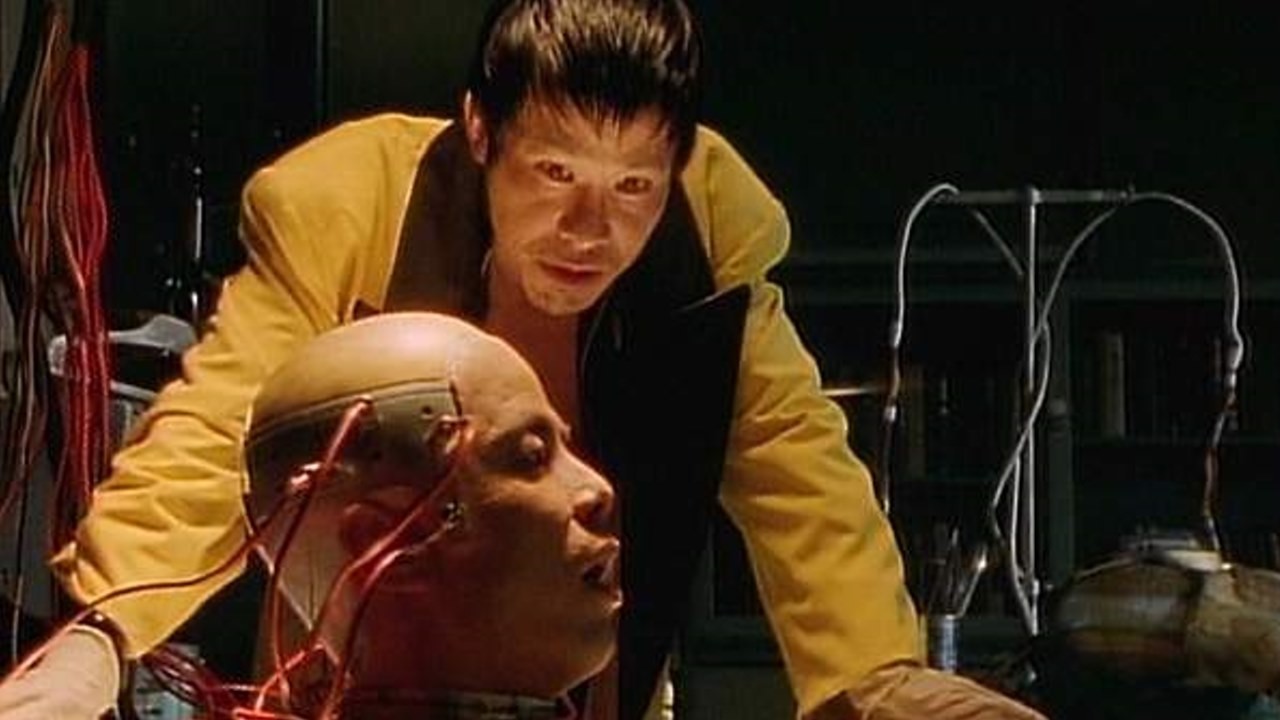
Takashi Miike is a Rockstar of Japanese cinema; his brand of shock and gore has made him a household name beyond his native land. In 1997 though, Miike took his staple aesthetic and exploded it onto a cyberpunk film like no other, that film was Full Metal yakuza.
The plot is rather simple, Yakuza member Kensuke finds himself and his idolised boss, Tosa, brutally murdered, but just like Robocop, Kensuke is given a second chance as a cyborg fixated on revenge. What entails is a narrative full of all the Miike-isms you have come to expect, extreme violence, gore, and wacky comedy.
Made in the height of Miike’s V-cinema days, Full Metal Yakuza exploits everything it can to the point of absurdity, and it’s all the better for it. This is a pure spectacle of extreme, and never does it take itself seriously, instead the film relishes existing in a world of crazed beauty. Full Metal Yakuza is hard to take your eyes off, you never know how it can top itself, but it always manages to, it is a non-stop thrill ride.
4. Rubber’s Lover (Shozin Fukui, 1996)
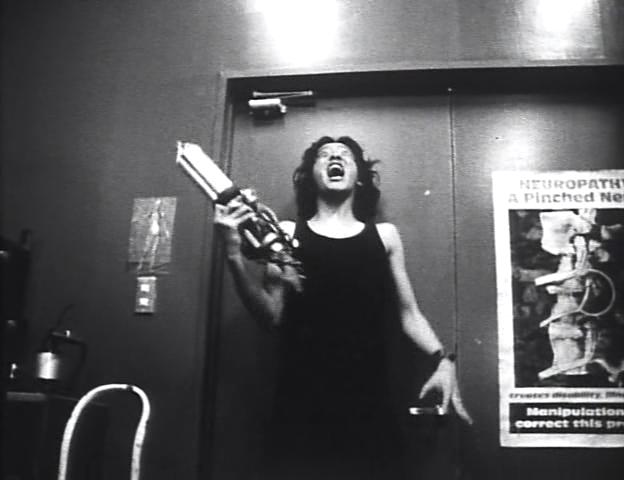
During the shoot of Tetsuo, a young Shozin Fukui worked as a second unit director, probably due to his experimental short work throughout the early ‘80s. An impressive portfolio that rivalled Tsukamoto’s creativity. Fukui was destined for more though, and soon he would helm his own feature films, one of which was Rubber’s Lover.
The film is a metal fetishist nightmare that feels like the visual depiction of a harsh noise project. The brutal black and white photography captures the erratic world of industrial science, topped with a layer of BDSM inspired eroticism. This is not a film for the many, this is an example of the cyberpunk extremity, straight from the deepest darkest corridor of its last moments as a genre. In a way, it acts as the genres final experiment in kinetic industrial imagery, as it pushes the iconography to its genre limits, and in doing so, it creates a film truly unlike anything you have ever seen before.
Rubber’s lover is a film about a group of scientists that abduct people in order to conduct new research. Their experiments often end in failure, but one last go yields a result they did not expect.
3. Hardware (Richard Stanley, 1990)
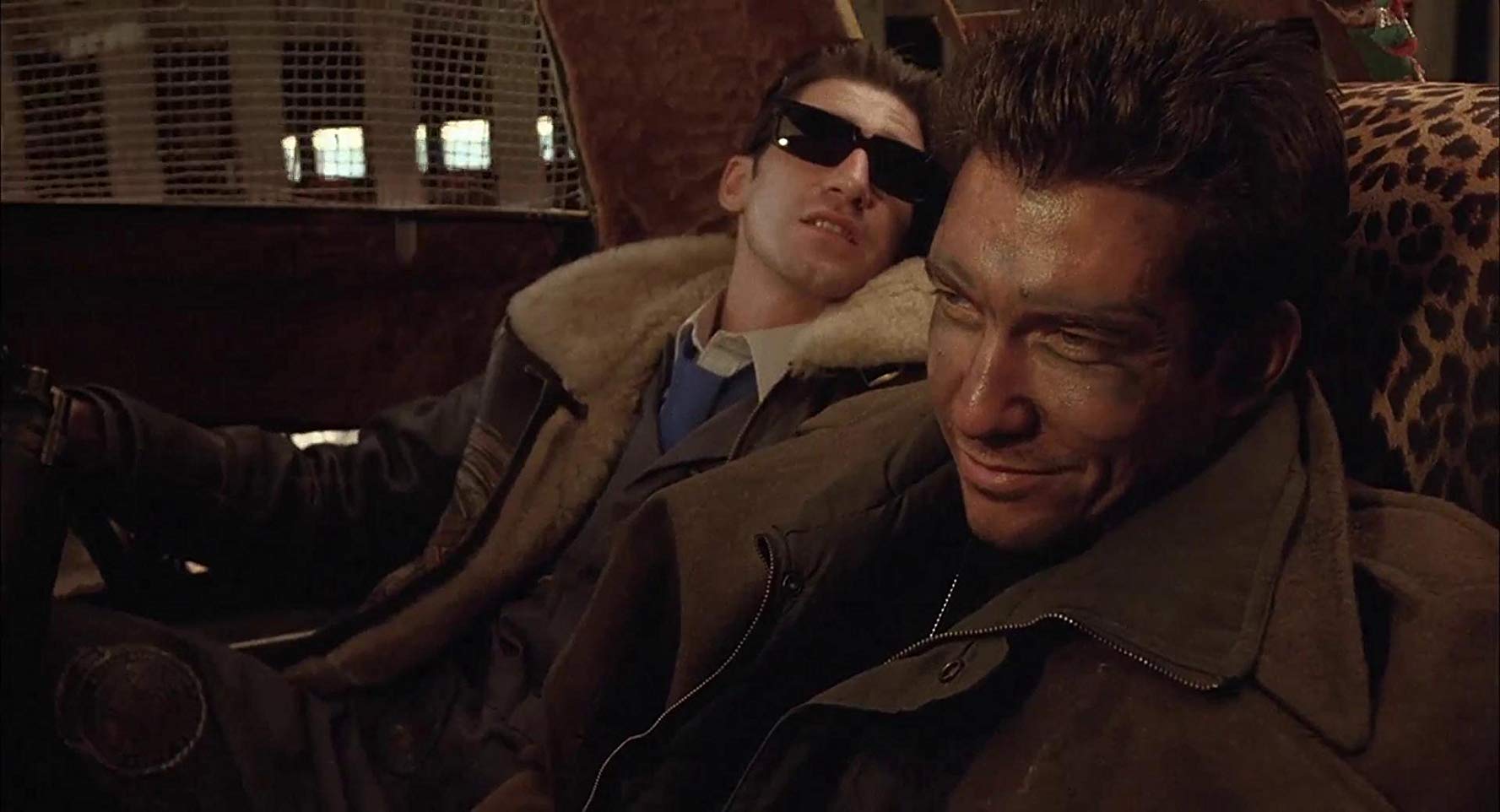
With Richard Stanley’s Colour Out of Space soon to be properly released, Hardware is sure to see a slight resurgence, and rightfully so, as it’s a cyberpunk classic.
The film is not without its cult following and is probably one of the more known films of this list; however, it still seems to lack the true praise it deserves. Coming out at the height of the cyberpunk craze, Hardware fulfils every expectation you want while giving so much more. The film is not perfect, but it achieves so much with so little.
Nomad scavenger, Mo (Dylan McDermott), finds the scrap remains of a broken robot, he gifts the robot’s head to his girlfriend, Jill (Stacey Travis), a metal sculptor by trade. Jill uses the head to finish a piece she has been working on recently, but all is not what it seems as the head slowly regains consciousness.
Hardware is a film that has a uniquely British tone, which is no surprise as the film was based on the 2000AD short story, Shok. A magazine most famous for the Judge Dredd character. Hardware exists as a beautiful example of what cinema can achieve; it showcases thematic content worth analysing but never demands it. Hardware can be experienced as a fun genre piece but can be so much more if you choose to look.
2. Anatomia Extinction (Yoshihiro Nishimua, 1995)
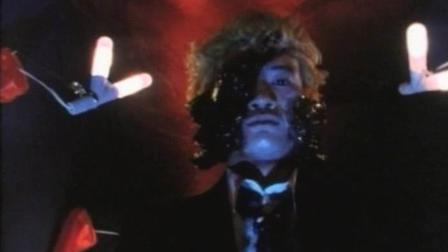
Tokyo Gore Police is a staple of the splatter punk genre, and a treasured film by many. A unique film that could have only come from the mind of Nishimua, but before he directed the splatter punk classic, Nishimua created a cyberpunk film that he would later remake into the splatter punk film we know and love, that film was Anatomia Extinction.
Anatomia Extinction acts as a somewhat transitional piece for Japan’s cyberpunk films, it shifts the focus away from the technological anxiety of the ‘80s and focuses on the fear of the crashing economy and overpopulation. Films like Tetsuo anticipated a horrid future, Anatomia Extinction reacts to a horrid present in the form of a horrid future, for that reason it’s a vital piece of the jigsaw to understanding cyberpunk. Just like it’s peers though, Anatomia Extinction exists in the same frantic space as many of the Japanese cyberpunk films, a sense of urgency and kinetic energy shape this film’s visual language. Although hard to find, Anatomia Extinction is an interesting film well worth viewing.
1. Electric Dragon 80.000 V (Sogo Ishii, 2001)
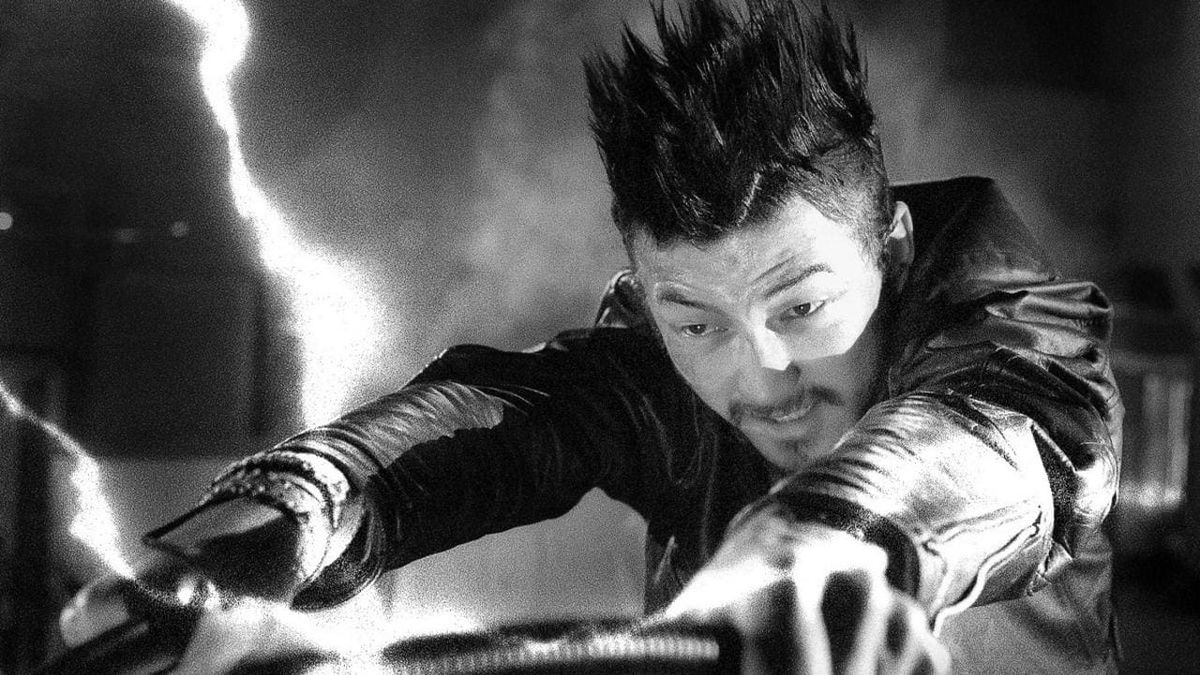
For the third time Ishii appears on this list, and rightfully so, his impact on Japan’s cyberpunk scene is undeniable, and his recognition is sorely lacking. The most amazing thing about the previous two films of Ishii’s to make this list is that they were not explicitly cyberpunk, but they clearly had so much to give to the genre. Electric Dragon is different, because Electric Dragon is nothing but cyberpunk.
The film is like the genres climax, to see the influencer of many finally helm the genre he helped create feels like a full stop. This climactic experience feels like a somewhat bookend to the story of cyberpunk, Ishii creates the film his career always suggested he would, and it’s everything you hoped it would be.
Electric Dragon feels like Ishii finally accomplished his early experiments that he conducted on Burst City: to create the visual representation of the punk ideology. This film is raw, loud, and unapologetic, but this time, unlike Burst City and Crazy Thunder Road, it’s authentically cyberpunk. Like the screech of a distorted pick slide, Ishii creates a film that can only be explained as an experience, as a feeling.
The film is not about the narrative, it is not about the cinematography, the editing, the acting, instead the film is about the impact and energy it has. Just like a punk performance isn’t about the music, it’s about the collective experience, it’s about something beyond the art-form it exists as, it’s about emotion, a collective feeling, a collective energy.
Electric Dragon is so important to the genre, such an important film, because it represents the end of a moment in cinema, in literature, that was born in Japan, and with Electric Dragon, it ends in Japan.